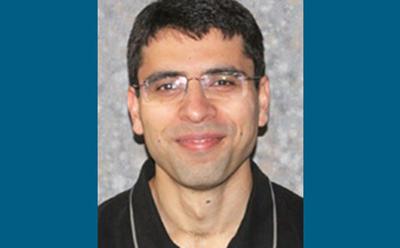Unveiling the mysteries of black holes
Exploring the extreme Universe using new X-ray technology.
The University of Southampton is part of international collaborations harnessing observations from the Japan Aerospace Exploration Agency and NASA’s X-ray space telescopes, NuSTAR and Hitomi, to better understand how black holes grow.
Black holes were first identified in space over 40 years ago, but we are still a long way from understanding how they grow and evolve. Dr Poshak Gandhi, Associate Professor and Science and Technology Facilities Council Ernest Rutherford Fellow in the University’s Astronomy Group, aims to change that. He is part of an international science team that has been developing and using the novel X-ray telescopes to achieve this.
So why study black holes? “Black holes are ubiquitous; every large galaxy hosts its own supermassive black hole at the centre,” says Poshak. “We now know that the growth of all these black holes goes hand-in-hand with the growth of the galaxies in which they sit: smaller black holes are hosted in smaller galaxies and larger galaxies tend to have much larger black holes.” There is now strong evidence to suggest that black holes have a much more profound impact on the Universe than once thought; galaxies themselves would have been much larger than they are today if black holes didn’t exist. Our own Milky Way galaxy may well have been much bigger than we see in the night sky.
As matter falls into black holes, it heats up to temperatures of many millions of degrees. This extreme environment is perfect for testing theories at the extremes of temperatures and gravity, which could not be achieved on Earth. The recent discovery of gravitational waves, in which Southampton researchers also participated, is a perfect example of the extreme physics that black holes allow us to probe.
While they are growing, black holes attract interstellar gas and dust, which radiates away its energy as it falls in, and can be detected using an X-ray telescope.
We are really at the forefront of knowledge here. The Hitomi space telescope lasted only a short time in orbit, but it opened our eyes to a whole new world of exploration through its high precision 'X-ray colour vision'. Similarly, NuSTAR, with a capability to focus very high energy X-rays, has transformed our understanding of some of the most extreme and hot plasmas in the Universe.
“By studying the X-ray spectra and brightness variations of matter swirling around black holes, we are learning a huge amount about these objects, including their extreme gravitational influence, the temperatures in their vicinity, and the composition of infalling interstellar gas. Hitomi was about 30 times better in its capability to split X-ray energies (like a prism splits visible light) than all previous missions. So that allowed us much better precision to measure all kinds of properties of these gases.”
Poshak is involved in a multitude of studies of supermassive black holes at the centre of nearby galaxies, as well as observations of smaller stellar-mass black holes within our own Milky Way. “What we’re hoping to do is to learn the intricate details of the extreme physics of black holes, how they grow, and the impact they have on their surroundings. Hitomi’s successor, XRISM, to be launched in 2021, is expected to throw open this field widely. I am very excited to be part of these international collaborative efforts, and look forward to solving mysteries that have long puzzled us.”
“It was clear to me that the astronomy group here at Southampton is one of the best in the UK focused on the study of black holes across their full mass range. It is a very dynamic group and I am able to collaborate with many people who are very close to all my research areas.
Image: Artist impression of the ASTRO-H observatory Credit: Akihiro Ikeshita / JAXA

You may also be interested in:

Personalised sensors for medical tests
Paper-based sensor could test for multiple conditions without the need to visit the doctor.

The big data challenge
Volume, variety, veracity and velocity of data.
Eye-tracking insights
Eye-tracking research at Southampton is having an impact on two diverse areas: airport security and improving understanding of how we process languages.